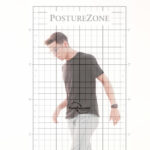Pain: A Vicious Spiral
Pain changes how you move – which leads to even more pain
The connection between neck pain and stiffness is more complex than you might think.
A new study about chronic pain demonstrates the tight relationship between motion AND control, demonstrating that pain impacts motion control, which affects the ability to balance. This is what Posture Specialists refer to as the Pain Cycle.
75 people with chronic, moderate-severe neck pain were compared with 91 healthy controls. Researchers used 3-D motion-tracking technology to look at neck flexibility, proprioception, head steadiness, trajectory movement control, and postural sway.
Not surprisingly, the neck pain patients showed reduced cervical range of motion (flexibility) and generally moved their heads slower and with more stiffness.
A rather obvious StrongPosture® Conjecture: Loss of motion at one (or more) spinal segment motor units would create this loss of flexibility, which may be a reason why patients with neck pain can benefit from spinal manipulation.
In addition, when researchers looked at head steadiness they found patients with a history of neck pain moved with stiffer motion patterns and greater predictability.
A less obvious conjecture: In other words, they’re locked into a “groove” of motion to avoid pain…to the point were the groove becomes a rut.
And lastly, when standing on a foam stabilization pad (a tool Posture Specialists often use to rehab posture & balance), there were no differences in standing postural sway with eyes open and closed. However, the pain patients had significantly larger sway.
A final conjecture: The loss of motion in the neck means there is less proprioceptive information coming into the the cerebellum, so the person has to sway more to increase the proprioceptive signals from the entire body about where the body needs to be in space to balance.
The result: Having pain makes you move differently in everything you do, setting you up for micro- and macro-trauma, perpetuating the Pain Cycle.
Another important but unmentioned factor in chronic pain: Neuroplasticity means the more pain a person experiences, the better the pain neurons become at telling the brain about pain.
Meisingset, I., Woodhouse, A., Stensdotter, A., Stavdahl, Ø., Lorås, H., Gismervik, S., . . . Vasseljen, O. (2015). Evidence for a general stiffening motor control pattern in neck pain: A cross sectional study. BMC Musculoskeletal Disorders, 16(1), 56. doi:10.1186/s12891-015-0517-2. Retrieved from http://www.biomedcentral.com/1471-2474/16/56





















